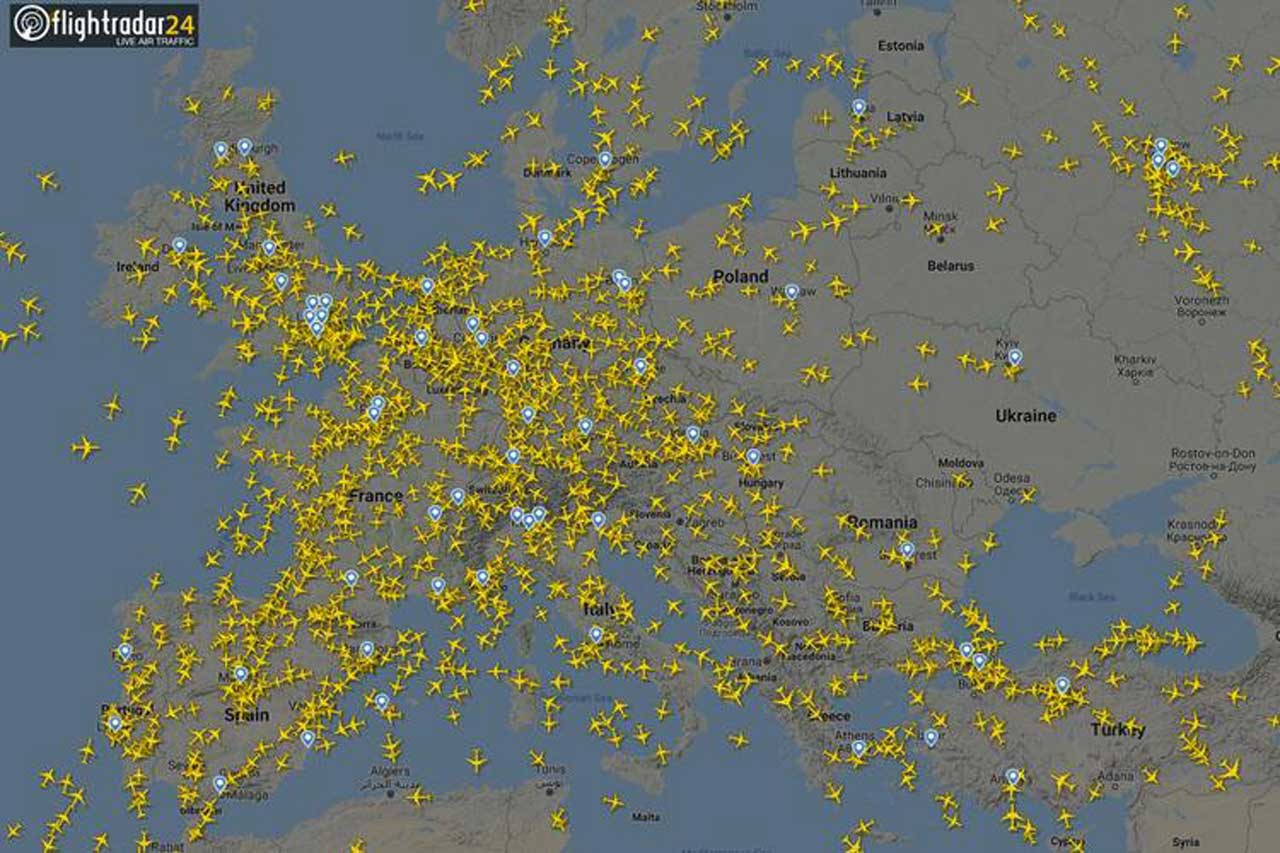Most airplanes and other aircraft are equipped with a repeater, a device that transmits the aircraft’s position and other flight information to the Air Traffic Control Center. These same signals can be received by inexpensive receivers based on a technology called ADS-B. This is exactly what flight-tracking websites do, providing users with real-time snapshots of everything in the sky.
When a US Air Force plane carrying Speaker of the House Nancy Pelosi landed in Taiwan in early August, more than 700,000 people around the world witnessed the event using Flightradar24’s flight tracking service.
The aircraft, a military version of a Boeing 737 called a C-40, took off from Kuala Lumpur in Malaysia before heading to Taiwan on a rather bizarre detour to avoid clashes with the Chinese military. This increased the flight time by several hours. It was not immediately clear to observers what the final destination would be, sparking controversy on the Internet, until finally, the plane turned north towards the island. As a result, it was the most tracked flight ever by Flightradar24, with 2.92 million people following at least part of the seven-hour journey.
Flightradar, which is part of a group of popular flight tracking services along with FlightAware and Plane Finder, was founded in Sweden in 2006. Moreover, the goal was to attract additional traffic to the airfare price comparison service.
It first gained worldwide recognition in 2010, when the Icelandic volcano Eyjafjallajökull eruption canceled thousands of flights and attracted four million visitors.
There were other significant events that users around the world followed through Flightradar24.
In April 2020, nearly 200,000 users watched as a Boeing 777 painted the crescent and star — symbols of the Turkish national flag — in the sky over Ankara — during celebrations for the 100th anniversary of Turkey’s sovereignty.
Before that, in September 2017, thousands watched Delta’s plucky Boeing 737 fly straight into Hurricane Irma, land in Puerto Rico, and take off for New York City 40 minutes later, flying neatly between the hurricane’s branches.
However, even in the absence of major events, the number of people tracking flights is constantly growing. Many use the site to track down a loved one, their flight, or find an incoming plane to fly later in the day.
Among the interested observers are those who rent equipment, and want to follow it in the sky. Finally, it is the airlines themselves, airports, and aircraft manufacturers, who use large amounts of data to obtain information about the industry.
To collect data, Flightradar built its network of ADS-B receivers, which they say is the largest in the world, with about 34,000 units, covering as far away as Antarctica.
About a quarter of the receivers are owned by Flightradar24, but most of them are built by enthusiasts who provide data voluntarily. Since it’s relatively easy to assemble the machine – all components cost around $100 – many have come into the system since Flightradar24 began opening up its network to the general public in 2009.
The density of the receivers affects the accuracy of tracking flights around the world, but there are holes objectively over the oceans. In this case, islands and ADS-B satellite equipment are used to the maximum.
Having such a granular and localized amount of data can be useful for getting an early picture of emergencies and accidents: All incoming information is stored on servers, and if necessary, you can go back to a specific date and extract the original data. This is usually done if an accident has occurred or if there is an official request from the air navigation service provider or the accident investigation department.
Sometimes data can reveal the cause of an accident before an official investigation does. In the case of Germanwings Flight 9525, which was deliberately diverted uphill by the co-pilot on March 24, 2015, the data paint a very clear picture: one of the parameters included in the most complete data package is the altitude that the pilots set to the autopilot. Now, this height value has been set to zero.
Aircraft owners and operators can decide to ban the public display of their data, most commonly for military, government, or private aircraft – as little as three percent.

